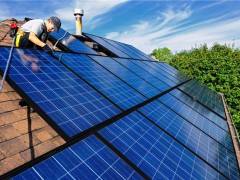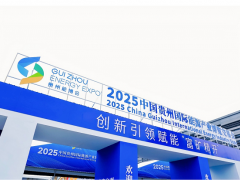據(jù)海上工程師網(wǎng)2022年4月26日?qǐng)?bào)道,全球管理咨詢公司麥肯錫公司在一份新報(bào)告中表示,隨著能源轉(zhuǎn)型的持續(xù)推進(jìn)以及電動(dòng)汽車的普及,全球石油需求可能在2025年達(dá)到峰值。
麥肯錫公司高級(jí)合伙人克里斯特·特里格加斯塔德表示:“過去幾年,我們確實(shí)看到能源轉(zhuǎn)型加快的步伐。每年我們都會(huì)發(fā)布這份報(bào)告,全球石油需求峰值正在臨近。根據(jù)我們的中間假設(shè),全球石油需求甚至可能在未來三到五年內(nèi)達(dá)到峰值,主要是由于電動(dòng)汽車的采用和普及。”
“然而,即使所有凈零承諾的國(guó)家都實(shí)現(xiàn)了它們的愿望,全球氣候變暖預(yù)計(jì)仍將達(dá)到1.7攝氏度。” 特里格加斯塔德如是說。
據(jù)麥肯錫公司預(yù)計(jì),到2050年前,可再生電力預(yù)計(jì)將增長(zhǎng)3倍,到2030年前將占全球發(fā)電量的50%,到2050年前將占80%-90%。到2050年前,氫氣需求量預(yù)計(jì)將增長(zhǎng)4-6倍,主要由公路運(yùn)輸、海運(yùn)和航空驅(qū)動(dòng)。到2050年前,氫氣和氫氣衍生合成燃料預(yù)計(jì)將占全球最終能源消耗的10%。
麥肯錫說,快速的技術(shù)發(fā)展和供應(yīng)鏈優(yōu)化共同使太陽能的成本降低一半,而風(fēng)能的成本也下降近三分之一。 因此,61%的新可再生能源裝機(jī)容量的價(jià)格已經(jīng)低于化石燃料替代品。電池成本在過去4年也下降近一半。
全球石油需求預(yù)計(jì)將在未來三到五年內(nèi)達(dá)到峰值,到2050年前,碳捕獲、利用和封存(CCUS)技術(shù)可能會(huì)從目前幾乎不存在的規(guī)模增長(zhǎng)逾100倍,投資機(jī)會(huì)將超過目前的液化天然氣市場(chǎng)。
麥肯錫公司表示,未來能源投資的增長(zhǎng)將幾乎完全由可再生能源和脫碳技術(shù)推動(dòng)。
此外,盡管各國(guó)政府和企業(yè)承諾到2050年前實(shí)現(xiàn)凈零排放,可再生能源系統(tǒng)達(dá)到85%,電動(dòng)汽車和脫碳技術(shù)的快速更新,但全球氣候變暖預(yù)計(jì)將超過1.7攝氏度。
李峻 編譯自 海上工程師網(wǎng)
原文如下:
Oil Demand Could Peak as Soon as 2025, McKinsey Says
Oil demand could peak as soon as 2025, as the energy transition continues to gain steam and as electric vehicle adoption increases, McKinsey & Company said in a new report.
Christer Tryggestad, a Senior Partner at McKinsey, says: “In the past few years, we have certainly seen the energy transition pick up pace. Every year we’ve published this report, peak oil demand has moved closer. Under our middle scenario assumptions, oil demand could even peak in the next three to five years, primarily driven by electric-vehicle adoption."
“However, even if all countries with net zero commitments deliver on their aspirations, global warming is still expected to reach 1.7°C. To keep the 1.5°C pathway in sight, even more ambitious acceleration is needed.”
According to McKinsey, renewables are projected to grow 3x by 2050, accounting for 50% of power generation globally already by 2030 and 80-90% by 2050. Hydrogen demand is expected to grow 4-6x by 2050, driven primarily by road transport, maritime, and aviation, and hydrogen and hydrogen-derived synfuels are expected to account for 10% of global final energy consumption by 2050.
Rapid technological developments and supply chain optimization have collectively halved the cost of solar, while wind costs have also fallen by almost one-third. As a result, 61% of new renewable capacity installation is already priced lower than fossil fuel alternatives. Battery costs have also fallen by nearly half in the past four year, McKinsey said.
Global oil demand is projected to peak in the next three to five years, and by 2050, CCUS could grow more than 100-fold from an almost non-existent footprint today, with investment opportunities exceeding LNG markets today.
According to McKinsey, future growth in energy investments will almost entirely be driven by renewables and decarbonisation technologies.
Also, despite net-zero commitments from governments and corporations, and 85% renewable power system by 2050, and the rapid update of EVs and decarbonization technologies, global warming is projected to exceed 1.7 degrees.
免責(zé)聲明:本網(wǎng)轉(zhuǎn)載自其它媒體的文章及圖片,目的在于弘揚(yáng)石化精神,傳遞更多石化信息,宣傳國(guó)家石化產(chǎn)業(yè)政策,展示國(guó)家石化產(chǎn)業(yè)形象,參與國(guó)際石化產(chǎn)業(yè)輿論競(jìng)爭(zhēng),提高國(guó)際石化產(chǎn)業(yè)話語權(quán),并不代表本網(wǎng)贊同其觀點(diǎn)和對(duì)其真實(shí)性負(fù)責(zé),在此我們謹(jǐn)向原作者和原媒體致以崇高敬意。如果您認(rèn)為本站文章及圖片侵犯了您的版權(quán),請(qǐng)與我們聯(lián)系,我們將第一時(shí)間刪除。







